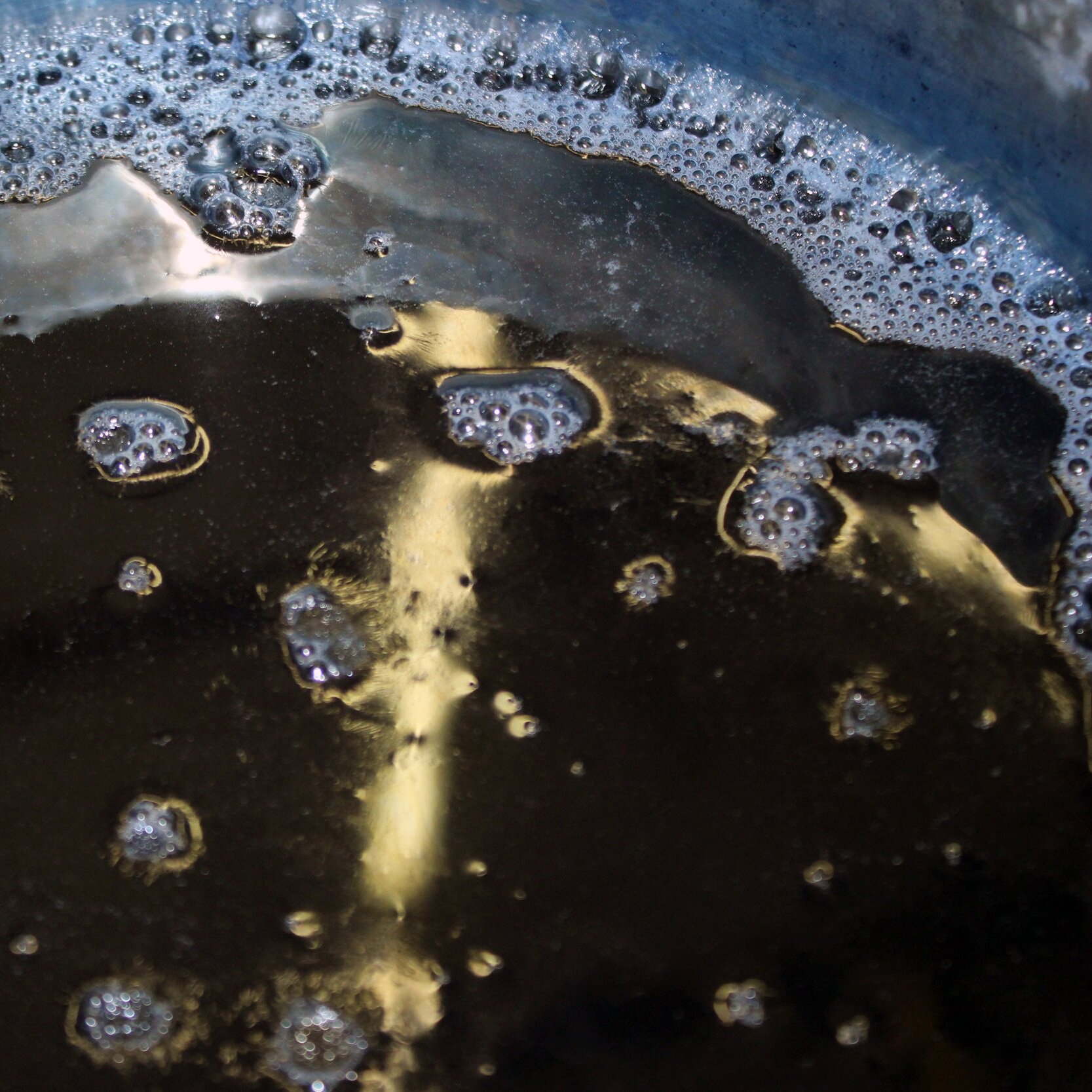My indigo samples.
My blog turned 1 this month! My first post went up in October 2015. To mark the occasion, I treated myself to a workshop on indigo dyeing at Manhattan's Textile Arts Center. I had no prior experience with dyeing in any form, so I really enjoyed this process.
Ingredients Used in the Indigo Dye Recipe
one part organic indigo powder
two parts fructose crystals
three parts pickling lime
To make indigo soluble in water, it requires antioxidation and alkalinity. The fructose removes the oxygen, and the pickling lime serves as the alkaline agent.
This is known as Michel Garcia's 1-2-3 method. You can learn more about it here.
Dye ingredients.
A peek into the dye vat.
We were each given strips of silk and cotton muslin (both bleached and unbleached). Once the dye was ready, we dipped each strip in water, then into the dye vat. Inside the vat, we gently rubbed the fabric, which helps it absorb the dye.
We observed the effect of the dye on each fabric strip, as well as the impact of each dip.
Then we waited for a while for our fabric strips to dry.
Indigo appears lighter after drying. Below are my swatches, a mix of cotton and silk. I took this photo at home after fully drying and ironing them.
The lighter ones were dipped once or twice. The darker ones I dipped up to five or six times.
After trying solid dyeing, we moved to shibori, an ancient Japanese dyeing technique.
Here are a few shibori samples our instructor shared with us. Each sample notes the type of dye used and the number of dips. These are much more precise than the notes I took in class. I think for any dye project, having this info on hand would be super helpful.
In shibori, various blocks, plates and clamps are used to manipulate the fabric and create patterns. The indigo leaves a bluish patina on all the dyeing tools, which is so pretty to me.
Drying our shibori samples.
Here are my shibori samples, both silk. For the left piece, I placed a few marbles and buttons on to the fabric, tying each one tightly with a rubber band.
On the right, I first folded the silk a few times into a rectangle. Then I sandwiched it between two plastic square discs and secured everything with two metal clamps.
I didn't overthink my shibori techniques— I was more curious to see what would happen. Even with amateur execution, shibori yields beautiful results.
Thanks to Textile Arts Center and our instructor, Clare Frost, who really knows her stuff. TAC offers classes that honor handmade techniques, like weaving, block printing and fabric marbling.
Go here to learn more — textileartscenter.com













